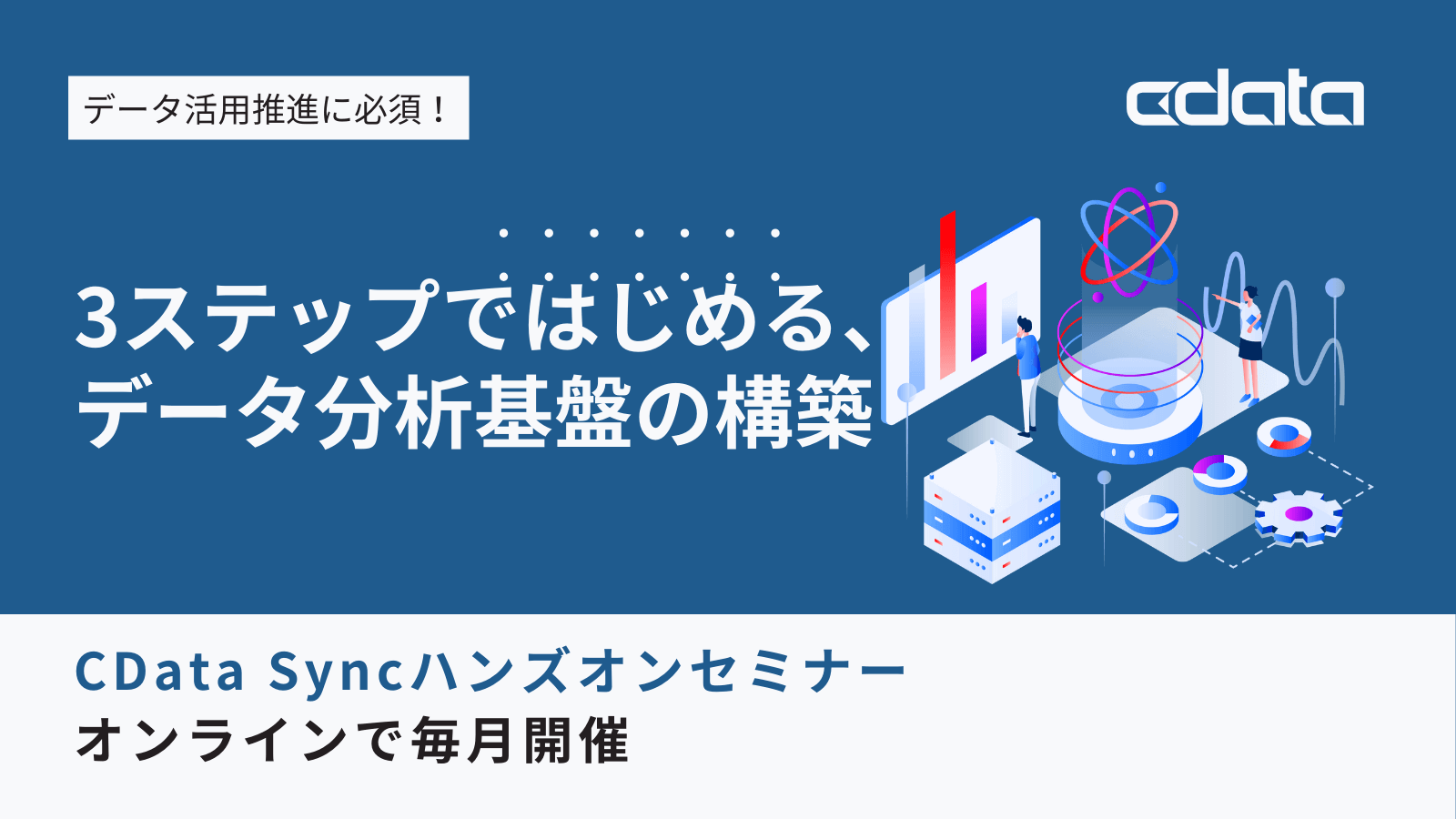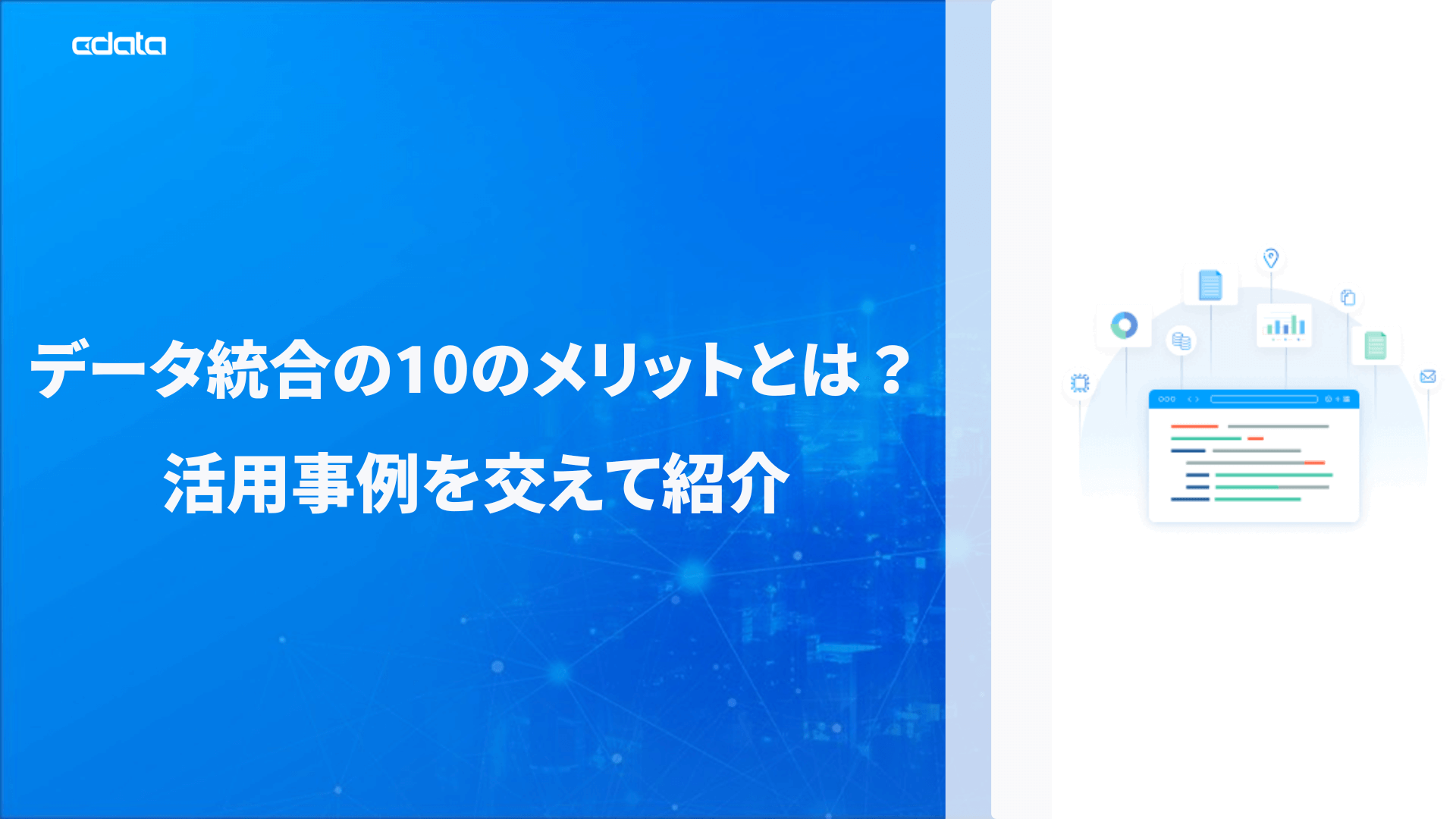ノーコードでクラウド上のデータとの連携を実現。
詳細はこちら →CData Software Japan - ナレッジベース
Latest Articles
- MySQL のデータをノーコードでREST API として公開する方法:CData API Server
- CData Sync AMI をAmazon Web Services(AWS)で起動
- Connect Cloud Guide: Derived Views, Saved Queries, and Custom Reports
- Connect Cloud Guide: SSO (Single Sign-On) and User-Defined Credentials
- Connect Cloud クイックスタート
- Shopify APIのバージョンアップに伴う弊社製品の対応について
Latest KB Entries
- DBAmp: Serial Number Expiration Date Shows 1999 or Expired
- CData Drivers のライセンスについて
- Spring4Shell に関する概要
- Update Required: HubSpot Connectivity
- CData Sync で差分更新を設定
- Apache Log4j2 Overview
ODBC Drivers
- [ article ] Microsoft Power Query からCockroachDB データに連携してExcel ...
- [ article ] Delphi のAutify データへのデータバインドコントロール
- [ article ] SAS JMP でのCData ODBC Driver for Oracle Service ...
- [ article ] ODBC を介してNode.js からDatabricks データをクエリ
JDBC Drivers
- [ article ] DBeaver からYouTube Analytics データに接続する方法
- [ article ] DBeaver からBing Search データに接続する方法
- [ article ] LDAP データをRACCOON から連携して利用
- [ article ] IBM Informix データをSisense でビジュアライズ
SSIS Components
- [ article ] Highrise データからSQL Server ...
- [ article ] Oracle HCM Cloud をSSIS 経由でSQL サーバーにバックアップする
- [ article ] Google Cloud Storage をSSIS 経由でSQL サーバーにバックアップする
- [ article ] Active Directory データからSQL Server ...
ADO.NET Providers
- [ article ] PowerBuilder からJira データに接続してみた
- [ article ] SSRS レポートサーバーにADO.NET Provider を配置してWooCommerce 連携
- [ article ] Entity Framework 6 からSage Intacct データに連携
- [ article ] ActiveCampaign データをDevExpress Data Grid ...
Excel Add-Ins
- [ article ] StiLL からCData Software ODBC Driver を使ってAzure Data ...
- [ article ] Excel を使ってOracle HCM Cloud にデータを追加したり、Oracle HCM ...
- [ article ] Excel データをR で分析
- [ article ] CDATAQUERY 関数を使って、Excel スプレッドシートにWooCommerce を自動挿入
API Server
- [ article ] クラウドネイティブRPA Automation 360™ でOData データを連携利用
- [ article ] Delphi のOData データへのデータバインドコントロール
- [ article ] IntelliJ からOData データに連携
- [ article ] Infragistics WPF XamDataGrid と OData をデータバインド
Data Sync
- [ article ] Snowflake へのe-Sales Manager データのETL/ELT ...
- [ article ] Microsoft SQL server へのSQL Server データのETL/ELT ...
- [ article ] SAP HANA へのMoney Forward Expense データのETL/ELT ...
- [ article ] Vertica へのHCL Domino データのETL/ELT ...
Windows PowerShell
- [ article ] PowerShell を使ってAuthorize.Net データをSQL Server ...
- [ article ] Google Cloud Storage データをPowerShell でMySQL ...
- [ article ] PowerShell からSuiteCRM データに接続してデータの取得・更新・挿入・削除・CSV ...
- [ article ] PowerShell からConfluence ...
FireDAC Components
- [ article ] Delphi のスマレジ データへのデータバインドコントロール
- [ article ] Delphi のGMO MakeShop データへのデータバインドコントロール
- [ article ] Delphi のCockroachDB データへのデータバインドコントロール
- [ article ] Delphi のOutreach.io データへのデータバインドコントロール






